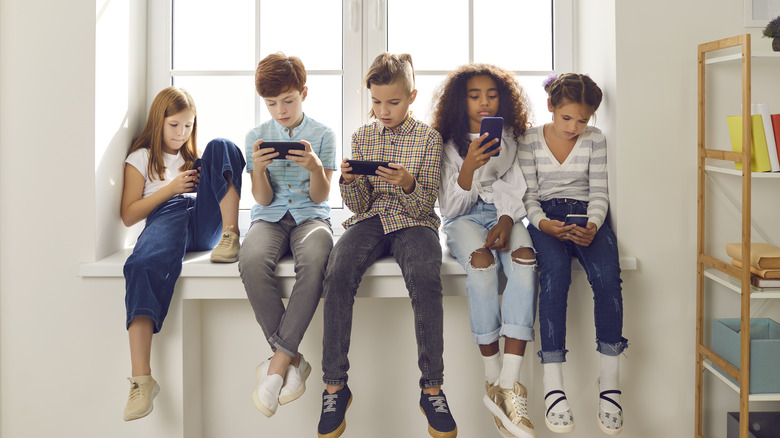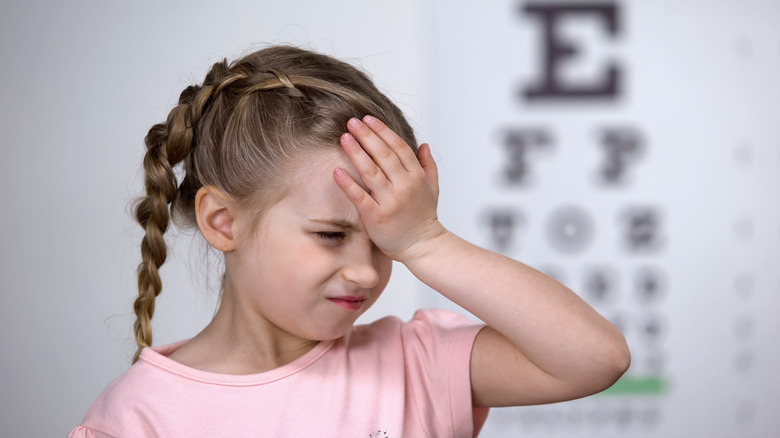The Eye Condition Kids Can Get From Staring At Screens
Over the last few decades, there have been huge advancements in the technologies used for mobile phones and video games, and these screens have become more prevalent in our lives. Unfortunately, this progression has had a negative psychological impact on young people, such as the effects of social media on the brain. It has also had an adverse physical effect, mainly when it comes to the uses of your eye, causing the condition myopia among children.
Generally referred to as shortsightedness or nearsightedness, myopia has become a worldwide public health concern with an increase in the number of kids and adolescents who have myopia. Between 1990 and 2023, the prevalence of cases rose from about 24% to nearly 36%, according to a 2024 analysis of 276 studies published in the British Journal of Ophthalmology. The researchers found a higher rate of nearsightedness among adolescents at 47%. What's more disturbing, though, is that they estimate the overall prevalence in young people to rise to almost 40% by 2050, exceeding 740 million cases.
One factor in the development of myopia is genetics, but environmental factors, such as spending a lot of time looking at screens, play a role, too. For instance, there has been a correlation between myopia and focusing on something at short range for long periods of time — such as reading a book or, in this case, staring at a mobile phone or game console screen. This prolonged, short-range focus makes the eyes believe that near vision is more important than distant vision, which leads to myopia.
Why the rise in myopia cases among children is alarming
Since myopia is usually called nearsightedness or shortsightedness, most people don't think about it being a concerning eye disease. However, it's worrisome when it develops among kids because their eyes are still growing. In regard to increased screen time among children and adolescents and looking at things up close for extended periods, the focal point doesn't line up along the retina edges, which is the part of the eye that senses light. As a result, the eyeball becomes elongated, creating more distance between the cornea and focal plane for the path of light through the eye, so the eye can't clearly focus on distant objects.
On average, myopia follows a pattern that stabilizes around the age of 15 and at a spherical correction of less than -5 D. When this condition develops too early in a child's life, though, it can progress to a stage that exceeds the -5 D spherical correction, at which point it becomes high myopia. This more serious form of the eye disease has a significantly higher risk of causing sight-threatening conditions at a young age, such as retinal detachment, degeneration, cataracts, and glaucoma.
Seeing the trend of more children developing myopia, the ophthalmology community is working hard to find solutions, such as medications that can delay myopic progression and hard contacts that temporarily reshape the eye. Other doctors recommend that parents limit screen time and encourage their kids to play outdoors more, the latter of which studies have linked to a reduced prevalence of myopia in children.

